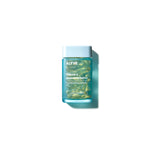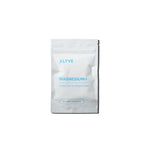The Benefits of Vitamin A
Vitamin A
Vitamin A (Retinol Acetate) is essential for maintaining healthy vision, immune function, and skin. It plays a critical role in cell growth and tissue repair, ensuring that your body develops and heals properly. Additionally, it supports the integrity of mucosal surfaces like those found in the respiratory system, acting as a first line of defense against infections.
Key Highlights
- Contributes to glowing skin
- Supports immune health
- A powerful antioxidant
- Helps to reduce inflammation
- Supports vision
- Aids cell growth
- Supports reproductive health (fertility)
Biochemistry Timeline
Vitamin A supplementation may take up to three months to alleviate deficiency symptoms, such as impaired vision, weakened immunity, and skin issues. Consistent intake helps restore optimal levels, enhancing overall health and vitality.
What is Vitamin A?
Vitamin A is not one single vitamin but the name given to a group of fat-soluble retinoids including retinol, retinal, and retinyl esters. Rather cleverly, Vitamin A is formed within the body from carotenoids, which we can get from food, known as preformed Vitamin A. Carotenoids fight free radicals which can cause harm by creating oxidative stress inside us. Research has linked oxidative stress to cognitive decline as well as illnesses such as diabetes, cancer, and heart disease.
Remember the old adage that eating carrots will help you see in the dark? The technical term this refers to is actually ‘low-light vision’ and it’s the active form of vitamin A (retinal) that combines with other molecules necessary for low-light vision, as well as colour vision.
The Amazing Benefits of Vitamin A:
Anti-inflammatory
Most famed for eye health, it will probably come as no surprise that due to its powerful antioxidant and anti-inflammatory status, it plays a critical role in improving immune function. Vitamin A supports the immune system as it helps to produce white blood cells that protect against infection.
Studies have shown that in some populations it has been shown that those who are deficient in vitamin A might have impaired recovery from infections.
Eye Health
Vitamin A helps protect and maintain the various structures of the eye including the cornea and the conjunctiva (a thin membrane that covers the surface of your eye and eyelids). Vitamin A may also help protect against certain eye diseases as some studies show that higher blood levels of beta-carotene, alpha-carotene, and beta-cryptoxanthin may reduce the risk of Age-Related Macular Degeneration (AMD) by up to 25%.
Skin Hydration
Vitamin A contains properties that naturally enhance the appearance of the skin helping to maintain surface tissues. It promotes and supports a healthy dermis and epidermis (skin layers) as well as aiding natural hydration helping to keep your skin moisturised contributing to a radiant glow.
Acne Prevention
Research has suggested that vitamin A deficiency may be a risk factor in developing acne due to its role in regulating skin cell production. A deficiency in vitamin A can lead to an overproduction of the protein keratin in hair follicles, causing them to become clogged with dead skin cells. This clogging can create an environment conducive to acne formation. By maintaining adequate vitamin A levels, skin health can be improved, potentially reducing the occurrence of acne and promoting a clearer complexion.
Anti-ageing
Studies regarding topical vitamin A application have shown multiple benefits for skin health. These benefits include the potential reduction of fine lines and wrinkles, as vitamin A promotes collagen production and increases cell turnover. This enhanced cellular activity helps to smooth out the skin’s surface, improving overall texture and reducing signs of aging. Additionally, topical vitamin A can help even out skin tone and reduce hyperpigmentation, contributing to a more youthful and radiant complexion.
Metabolism Regulation
Vitamin A is an antioxidant that helps protect cells from oxidative damage, reduces inflammation and supports the immune system. By regulating the metabolism of fatty tissue at the cellular level, it plays a significant role in maintaining overall metabolic health.
Vitamin A can aid in weight control by regulating fat metabolism and the function of fat-storing cells (adipocytes). It helps in converting pre-fat cells into mature fat cells, which affects how fat is stored and used for energy. Adequate vitamin A levels can promote healthy fat distribution and support overall metabolic health, making it easier to maintain a healthy weight.
By minimising oxidative stress and controlling the function of fat-storing cells, vitamin A contributes to maintaining a balanced and healthy weight.
Summary
Vitamin A (Retinol Acetate) is vital for healthy vision, immune function, and skin health. It aids cell growth, tissue repair, and supports mucosal surfaces, enhancing defense against infections. Supplementation may take up to three months to improve deficiency symptoms like impaired vision and weakened immunity. Rich in antioxidants, it combats oxidative stress, promoting overall health. Vitamin A also benefits skin by reducing acne and signs of aging, and helps regulate fat metabolism, supporting weight control. Sources include liver, fish, dairy, and plant-based foods like carrots and sweet potatoes. Proper intake is essential for overall vitality and well-being.
FAQs
What are the signs of vitamin A deficiency? Symptoms include night blindness, dry eyes, a weakened immune system, dry skin, and an increased risk of infections.
Can I get enough vitamin A from my diet? Yes, vitamin A can be obtained from foods like liver, fish, dairy products, and plant sources such as carrots, sweet potatoes, and leafy greens.
Are there any side effects of vitamin A supplementation? Excessive vitamin A intake can lead to toxicity, causing symptoms like nausea, headaches, dizziness, and even liver damage. It’s important to stick to recommended dosages.
Can vitamin A interact with medications? Yes, vitamin A can interact with certain medications, including blood thinners and some cholesterol-lowering drugs. Consult a healthcare provider before starting supplementation.
Is vitamin A safe during pregnancy? Excessive amounts of vitamin A can be harmful. Pregnant women should consult a healthcare provider for appropriate dosages.
Research:
- Huang, Z., Liu, Y., Qi, G., Brand, D., & Zheng, S. G. (2018). Role of Vitamin A in the Immune System. Journal of clinical medicine, 7(9), 258.
- Weiss, J. S., Ellis, C. N., Headington, J. T., Tincoff, T., Hamilton, T. A., & Voorhees, J. J. (1988). Topical tretinoin improves photoaged skin. A double-blind vehicle-controlled study. JAMA, 259(4), 527–532.
- Jeyakumar, S. M., & Vajreswari, A. (2015). Vitamin A as a key regulator of obesity & its associated disorders: Evidences from an obese rat model. The Indian journal of medical research, 141(3), 275–284.
- Kiefer, F. W., Vernochet, C., O’Brien, P., Spoerl, S., Brown, J. D., Nallamshetty, S., Zeyda, M., Stulnig, T. M., Cohen, D. E., Kahn, C. R., & Plutzky, J. (2012). Retinaldehyde dehydrogenase 1 regulates a thermogenic program in white adipose tissue. Nature medicine, 18(6), 918–925.
- Frey, S, K., & Vogel, S. (2011). Vitamin A Metabolism and Adipose Tissue Biology. Nutrients, 3 (1), 27-39.
- Lobo, V., Patil, A., Phatak, A., & Chandra, N. (2010). Free radicals, antioxidants and functional foods: Impact on human health. Pharmacognosy reviews, 4(8), 118–126.
- Stephensen C. B. (2001). Vitamin A, infection, and immune function. Annual review of nutrition, 21, 167–192.
- Wu, J., Cho, E., Willett, W. C., Sastry, S. M., & Schaumberg, D. A. (2015). Intakes of Lutein, Zeaxanthin, and Other Carotenoids and Age-Related Macular Degeneration During 2 Decades of Prospective Follow-up. JAMA ophthalmology, 133(12), 1415–1424.
- Zhong, M., Kawaguchi, R., Kassai, M., & Sun, H. (2012). Retina, retinol, retinal and the natural history of vitamin A as a light sensor. Nutrients, 4(12), 2069–2096.
- Stephensen C. B. (2001). Vitamin A, infection, and immune function. Annual review of nutrition, 21, 167–192.
- Divya, S, A., Srihharsha, M., Narotham, R, K., Krupa, S, N., & Siva, T, R, K. (2015). Role of Diet in Dermatological Conditions. Journal of Nutrition & Food Sciences, 5 (5), 1-7.
- Fenzl, A., Kulterer, O, C., Spirk, K., Mitulovic, G., Marculescu, R., Bilban, M., Baumgartner-Parzer, S., Kautzky-Willer, A., Kenner, L., Plutzky, J., Quadro, L., & Kiefer, F, W. (2020). Intact vitamin A transport is critical for cold-mediated adipose tissue browning and thermogenesis. Molecular Metabolism, 42.









